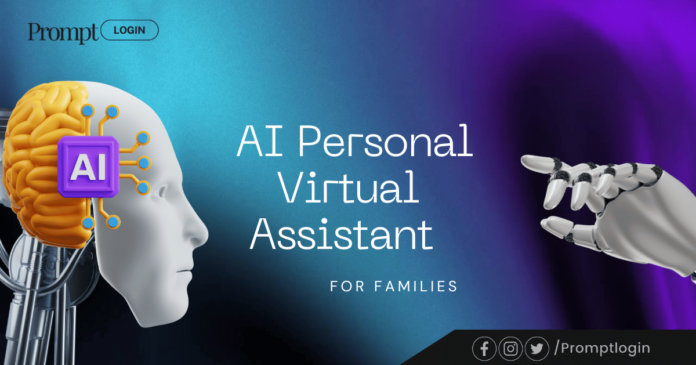Introduction
An AI personal virtual assistant for families to manage their daily lives, making tasks more efficient and less stressful. From scheduling appointments to assisting with homework, these advanced tools can handle numerous responsibilities. But how do they work, and are they worth the investment? In this blog, we’ll answer frequently asked questions, explore the best options for AI assistants, and highlight how families can make the most of these cutting-edge technologies.
What Is an AI Personal Virtual Assistant?
An AI personal virtual assistant is a software program designed to perform tasks, answer questions, and manage schedules using artificial intelligence. These assistants can operate through devices like smartphones, tablets, or smart home hubs, allowing seamless integration into your family’s daily routine. Popular assistants include ChatGPT, Yohana, Amazon Alexa, and Google Assistant.
Can I Use AI as My Personal Assistant?
Yes, you can have AI as your personal assistant! AI personal assistants can help you with tasks such as:
- Putting reminders of critical family dates.
- Assisting children with their homework and educational tools.
- Organizing grocery lists and meal planning.
- Control of smart home devices, such as thermostats, lights, and security cameras.
With only a few voice commands or text inputs, these devices can simplify your household’s activities.
What Is the Best AI for Personal Assistance?
The best AI for personal assistance depends on your family’s specific needs. Here are some top contenders:
- Amazon Alexa: Best for smart home integration.
- Google Assistant: Great at answering questions and integrating with Google services.
- Yohana Virtual Assistant: Designed for families and provides concierge-like services.
- ChatGPT: Good for brainstorming, answering queries, and serving as a general-purpose helper.
Each of these plans has its particular strengths, so you can pick one that best fits your device and the needs of your family.
How Much Does an AI Assistant Cost?
The cost of an AI personal assistant may vary widely:
- Free Options: Assistants like Google Assistant, Amazon Alexa, and ChatGPT (basic versions) are available for free.
- Subscription Plans: Premium features for tools like ChatGPT (ChatGPT Plus) start at $20/month.
- Hardware Costs: Devices like Amazon Echo or Google Nest cost between $50-$200, depending on the model.
- For families seeking advanced services, such as Yohana Virtual Assistant, monthly fees may range from $30-$100.
What Is the Best Home AI Assistant?
Best AI Assistant For Home Use: It depends on your family’s ecosystem.
- Amazon Alexa: Ideal for families with more than one Echo device.
- Google Assistant: Great for families already invested in Google services.
- Apple’s Siri: Works with Apple HomeKit and iOS devices.
These assistants not only answer questions but also control smart home appliances, ensuring convenience and efficiency.
Is There a Free AI Personal Assistant?
Yes, there are free AI personal assistants available, including:
- Google Assistant: Free for Android and iOS users.
- Amazon Alexa: Free when paired with compatible devices.
- ChatGPT: Provides free access to a basic version.
These free tools are an excellent starting point for families new to AI assistants.
Is Virtual Assistance Profitable?
Yes, virtual assistance can be profitable in many ways:
- Time Savings: Families save hours each week by delegating tasks to an AI assistant.
- Cost Savings: No more missed appointments or late fees because of reminders.
- Productivity Boost: AI assistants keep the family organized for smoother daily operations.
Using ChatGPT as a Personal Assistant: A Step-by-Step Guide
It’s easy to use ChatGPT as a personal assistant:
- Create an Account: Sign up for free or opt for a premium plan.
- Set Your Goals: Define tasks such as creating shopping lists, organizing schedules, or generating homework help.
- Interact Naturally: Ask questions or give assignments in plain language.
- Integrate Tools: Integrate ChatGPT with other tools or platforms, such as Google Calendar, to extend its functionality.
How Do I Make My Own AI Assistant?
Creating your own AI assistant is more advanced but achievable with these steps:
- Pick a framework: Utilize tools such as Python or AI platforms (e.g., TensorFlow).
- Set Up APIs: Integrate the likes of OpenAI or Google’s Dialogflow.
- Train Your Assistant: Teach it to do particular tasks with machine learning models.
- Deploy the Assistant: Run it on devices such as Raspberry Pi or a web server.
For most families, using existing AI tools is more practical than building one from scratch.
What Is the Most Popular Virtual Assistant?
The most widely used virtual assistants worldwide are:
- Amazon Alexa: Famous for its vast array of skills.
- Google Assistant: Offers advanced natural language processing.
- Apple’s Siri: Favourite among iPhone and Mac users.
The market is dominated by these assistants owing to their easy-to-use interfaces and solid ecosystems.
Exploring Yohana: A Virtual Assistant for Families
Yohana is a virtual assistant designed just for families. It helps with:
- Customizable Services: Personalized assistance in scheduling, research, and organization.
- Human-AI Collaboration: Combines human support with AI technology.
Although it’s subscription-based, Yohana can greatly lessen stress for busy families.
AI Personal Virtual Assistant for Family Free Options
If you’re looking for free options, consider these tools:
- Google Assistant: Free and feature-rich.
- ChatGPT: Excellent for text-based tasks and general questions.
- Amazon Alexa: Comes free with Echo devices.
These assistants are extremely valuable at no charge.
ALSO READ: Mastering AI for Greater Search Visibility
Conclusion
AI personal virtual assistants are game-changers for modern families, saving time, improving organization, and reducing stress. Whether you go for the free option with Google Assistant or the premium service like Yohana, these tools can make family life more manageable. Start exploring the benefits today and experience a smoother, more efficient household.



